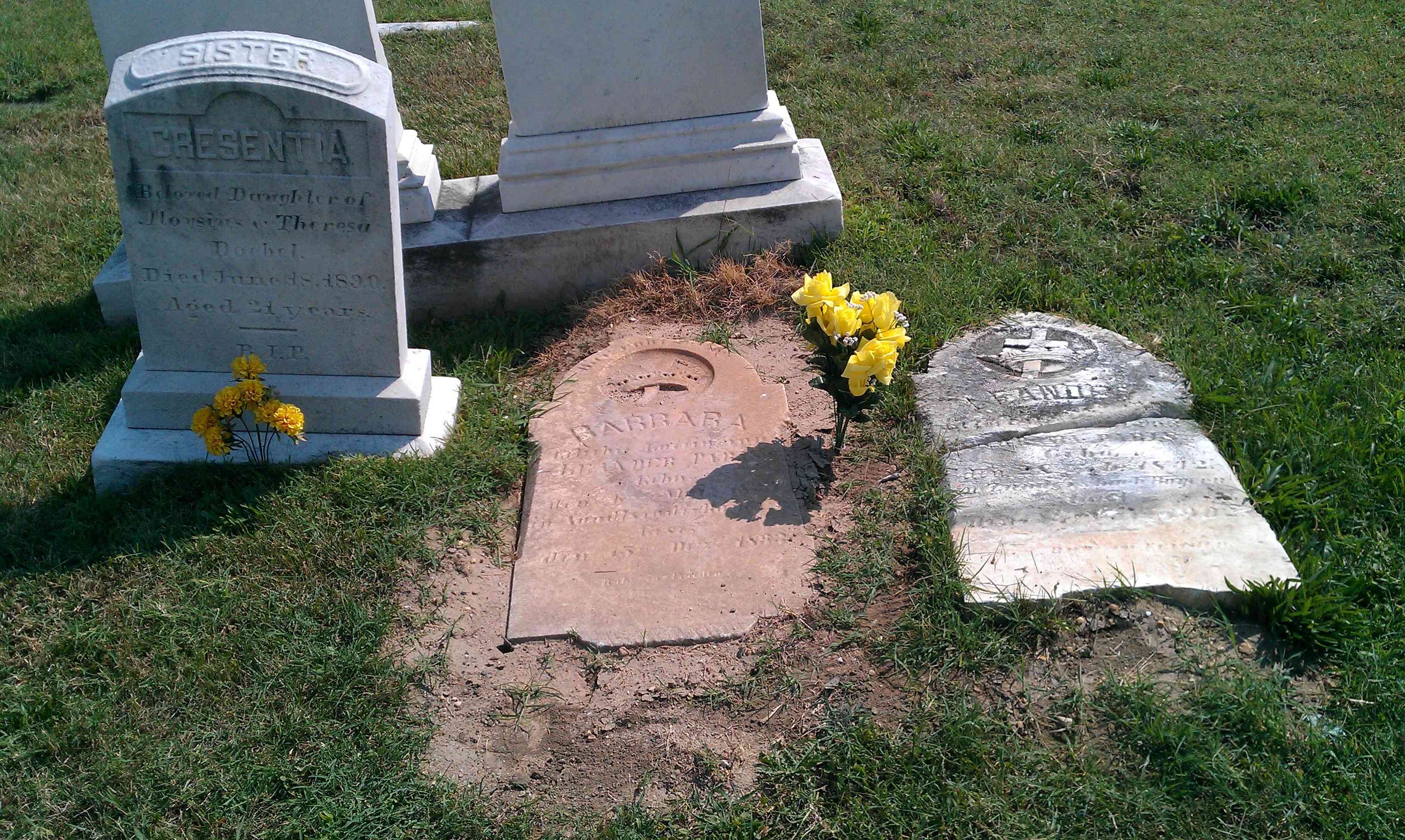 One of my favorite things in genealogy is to visit the grave sites of my ancestors. There is a special sacredness about being at the final resting place of an ancestor, not to mention it is refreshing to do genealogy outside now and then. Finding these grave sites represents a recurring theme among the family history miracles I've experienced. I recall how several years ago, in 2005, my family visited the Mt. Carmel Cemetery on O'Donnell St. in Baltimore. My father, mother, and I, split up to find the location of George and Margaret Grauling's, my 3rd-great grandparents', grave. My mother was the first one to spot it and she hollered excitedly for us to come over to see it. I know that was one of the most meaningful cemetery finds for her. Finding a grave site for the first time is exciting. The search often includes fun "detective" work, but sometimes it just takes a relaxing stroll through the cemetery. Honoring our ancestors by visiting their graves has been a bonding experience for our family. Over the years, we have visited the graves of close to 50 direct ancestors as well as countless others. With the assistance of Find A Grave volunteers and others, our family has access to pictures of another 20 or so direct ancestors' graves.
One of my favorite things in genealogy is to visit the grave sites of my ancestors. There is a special sacredness about being at the final resting place of an ancestor, not to mention it is refreshing to do genealogy outside now and then. Finding these grave sites represents a recurring theme among the family history miracles I've experienced. I recall how several years ago, in 2005, my family visited the Mt. Carmel Cemetery on O'Donnell St. in Baltimore. My father, mother, and I, split up to find the location of George and Margaret Grauling's, my 3rd-great grandparents', grave. My mother was the first one to spot it and she hollered excitedly for us to come over to see it. I know that was one of the most meaningful cemetery finds for her. Finding a grave site for the first time is exciting. The search often includes fun "detective" work, but sometimes it just takes a relaxing stroll through the cemetery. Honoring our ancestors by visiting their graves has been a bonding experience for our family. Over the years, we have visited the graves of close to 50 direct ancestors as well as countless others. With the assistance of Find A Grave volunteers and others, our family has access to pictures of another 20 or so direct ancestors' graves.After a half-decade of wondering what happened to the record of John A. Whipple's, my Civil War ancestor's burial, I located him at the Soldiers Home National Cemetery in Washington, D.C. Previously I only had the record that referred to the Capitol Barracks as his place of burial. It is likely that I would not have found his stone even if I had gone to that cemetery sooner. It was possibly the newest stone there and looked like it was recently replaced. Sometimes we want to find an ancestor "now," when perhaps God has better timing in mind.
 On that same trip my parents and I stopped at the Rock Creek Cemetery to find my great grandparents' grave--Clifford and Helen McCormick. We did not find them at that time because the cemetery office was closed, but I went back a couple months later after getting the section number by calling. What happened next is exemplary of other discovery experiences I've had. After parking on a cemetery road that bordered that section, I came out of my car and walked forward. The very first stone I came to was the stone of my great grandparents and the light from the sun seemed to shine down directly on that very spot during that beautiful pre-Spring day in March 2010. For several minutes I stood there and took in the calm of the day and felt thankful for my great grandparents.
On that same trip my parents and I stopped at the Rock Creek Cemetery to find my great grandparents' grave--Clifford and Helen McCormick. We did not find them at that time because the cemetery office was closed, but I went back a couple months later after getting the section number by calling. What happened next is exemplary of other discovery experiences I've had. After parking on a cemetery road that bordered that section, I came out of my car and walked forward. The very first stone I came to was the stone of my great grandparents and the light from the sun seemed to shine down directly on that very spot during that beautiful pre-Spring day in March 2010. For several minutes I stood there and took in the calm of the day and felt thankful for my great grandparents.A more recent experience with a first time visit of an ancestor's grave was my visit to the grave of my 5th-great grandmother Barbara Doebel Paris. The Most Holy Redeemer Cemetery in Baltimore had no notation whether a headstone existed for Barbara, but I like to visit my ancestors' graves even if there is no marker. My parents visited the lot a few months ago and found the headstone of her husband Leander broken in two, and another stone face-down in the dirt next to his. After informing the cemetery and calling a few times to follow up, the cemetery had both stones laid face up. On August 2, 2011 my parents and I visited the grave together. There is something deeply meaningful about caring for the grave of an ancestor.



No comments:
Post a Comment
Thanks for your kind and thoughtful comments.